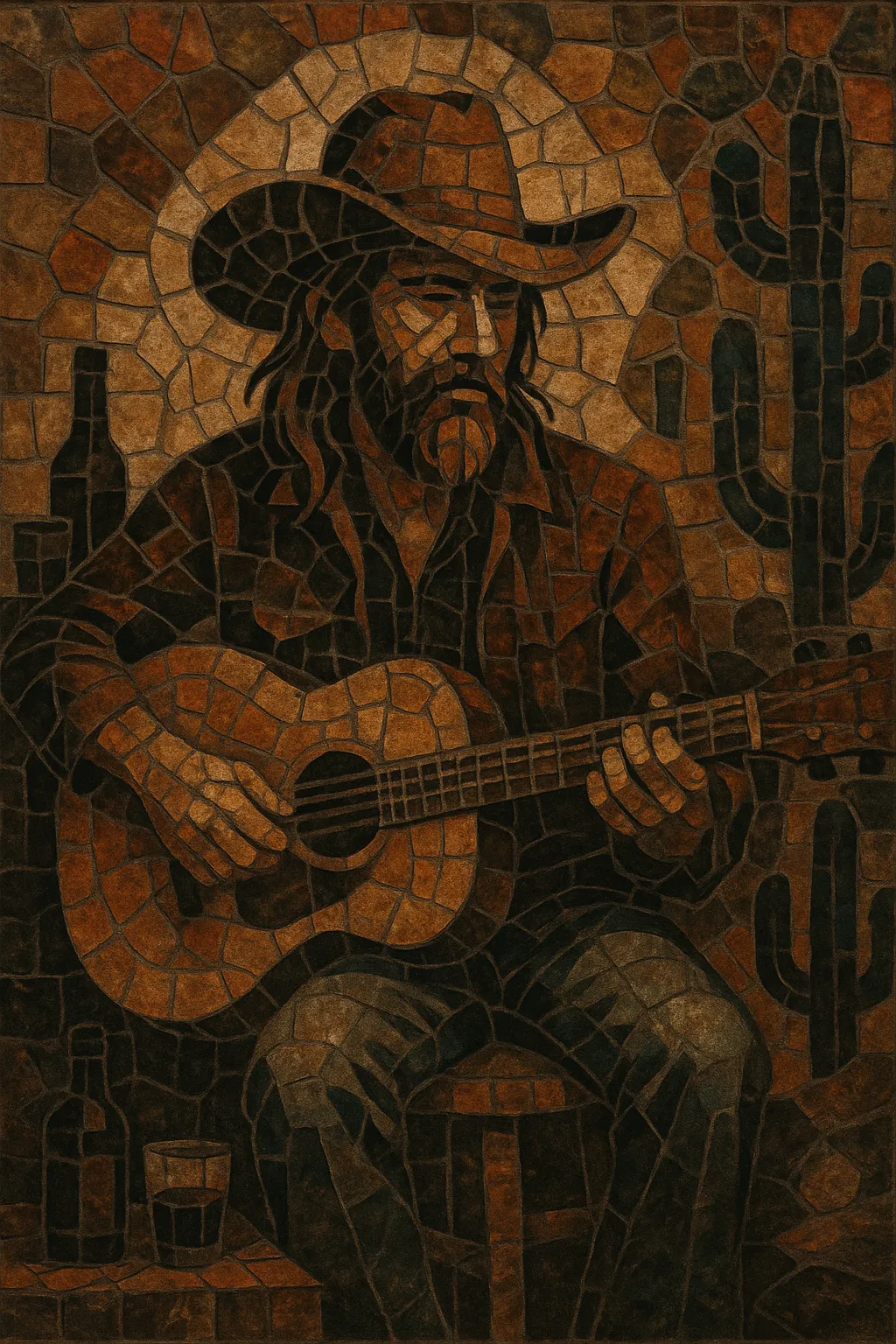
Outlaw country is a raw, roots-oriented branch of country music that emerged as a rebellion against the polished "Nashville sound" of the late 1960s and 1970s. Artists asserted creative control over songwriting, production, and image, favoring honest storytelling, lean arrangements, and a rugged, road-worn aesthetic.
Musically, it blends honky-tonk grit, Bakersfield twang, folk lyricism, blues feeling, and rock attitude. The songs often feature baritone or conversational vocals, Telecaster bite, pedal steel and acoustic guitars, steady backbeats or two-step shuffles, and chord progressions rooted in country and blues. Lyrically, it centers on independence, working-class realities, heartbreak, traveling, law-versus-outlaw tensions, and personal redemption.
As both a sound and a stance, outlaw country prioritized authenticity over commercial gloss, leaving a lasting imprint on Americana, alt-country, Texas/Red Dirt scenes, and beyond.
Outlaw country took shape in the late 1960s and early 1970s as artists pushed back against the heavily produced, string-laden Nashville sound and the business control exerted by major labels. Inspired by honky-tonk bars, the Bakersfield sound’s twangy independence, and the confessional songwriting of the folk and singer-songwriter movements, performers demanded autonomy over their recordings, band choices, and repertoire.
The genre crystallized in the early-to-mid 1970s. Willie Nelson’s move to Texas, Waylon Jennings’ renegotiated creative control, and albums like “Red Headed Stranger,” “Honky Tonk Heroes,” and “Wanted! The Outlaws” established the sound: dry, close-up vocals, unfussy rhythm sections, and songs that read like short stories. Johnny Cash’s rebellious persona dovetailed with the movement, while writers like Billy Joe Shaver and Kris Kristofferson infused literary grit. The image—leather, denim, and a lived-in look—matched the lyrical themes of self-reliance and moral ambiguity.
As mainstream country leaned pop, the outlaw ethos persisted in Texas and independent circles. Hank Williams Jr. carried a rowdy, defiant torch into the 1980s. Jerry Jeff Walker, Townes Van Zandt, and Guy Clark upheld a songwriter-first approach that influenced generations. Meanwhile, related scenes (cowpunk, Americana’s early stirrings) adopted the DIY spirit and rough-hewn aesthetics of outlaw country.
Outlaw country laid the groundwork for alt-country and modern Americana, encouraging artists to own their masters, record outside Nashville, and foreground authentic narratives. Its sonic and cultural DNA runs through Texas country and the Red Dirt movement, as well as heartland and roots-rock artists who prize character-driven storytelling and unvarnished production.

